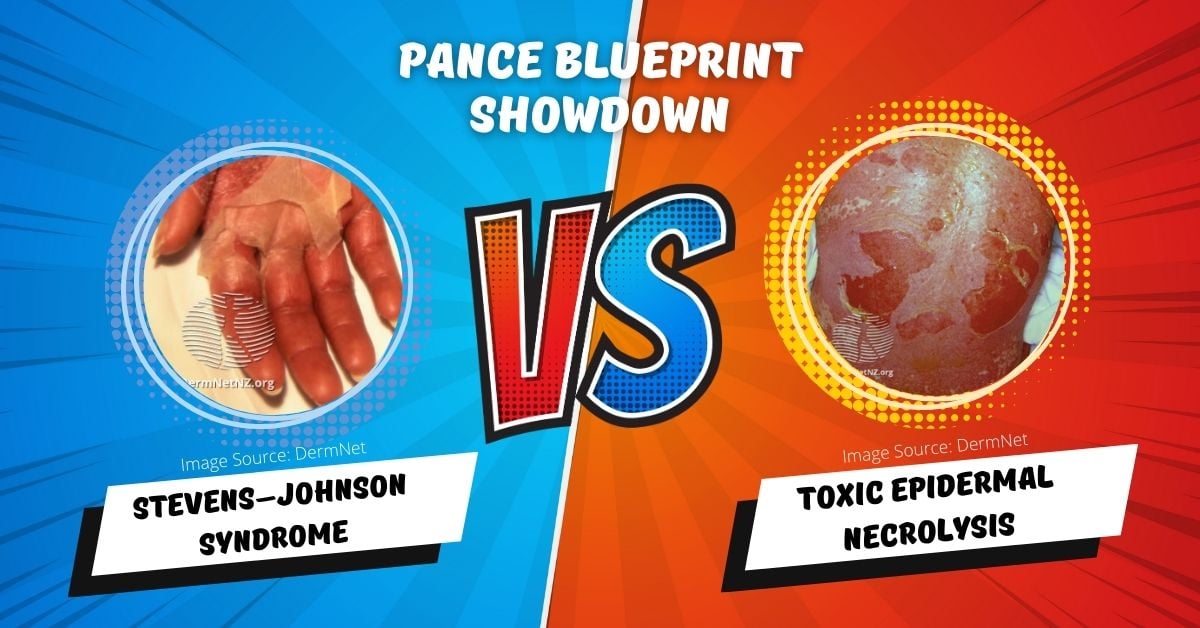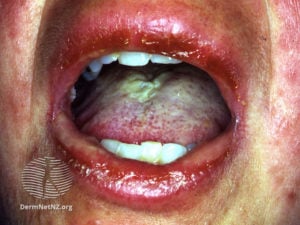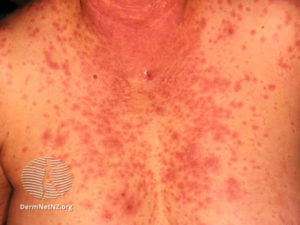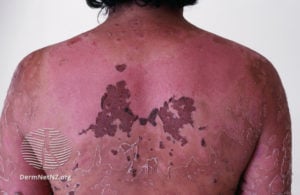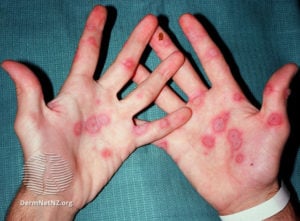Stevens-Johnson syndrome (SJS) and Toxic Epidermal Necrolysis (TEN), along with erythema multiforme (EM), are significant topics in the NCCPA PANCE Content Blueprint covered as part of the PANCE Blueprint Dermatology System under the category of desquamation.
Though they may appear similar and are often discussed together, SJS and TEN are distinct entities, and recognizing their differences is paramount for those preparing for the PANCE, EOR, or EOC exams.
Here are the key similarities and differences, including a comparison of SJS/TEN and erythema multiforme.
Image source: DermNet
Similarities:
- Stevens-Johnson syndrome and toxic epidermal necrolysis are considered variations of the same skin condition but are along a spectrum where toxic epidermal necrolysis is the more severe form.
- Stevens-Johnson Syndrome and toxic epidermal necrolysis are both type IV hypersensitivity reactions.
- Both are caused by cytotoxic T cells inappropriately attacking and killing epithelial cells in the mucosa and skin epidermis.
- Two distinguishing symptoms of Stevens-Johnson syndrome and toxic epidermal necrolysis from other similar conditions are that both mucosal linings AND skin are affected.
- Both can be triggered by certain types of medications, but can also be triggered by infections.
- Examples of medications include some anticonvulsants, like carbamazepine; some antibiotics, like sulfonamides; some immune modulators, like nevirapine and sulfasalazine; and some NSAIDs, like piroxicam.
- Infections, like Mycoplasma pneumoniae or cytomegalovirus, can also be a trigger.
- Both can cause a variety of symptoms, including fever, rash, sore throat, cough, red eyes, and tender, pink skin.
- Both can lead to the detachment of skin and mucosal linings, leading to infection and sepsis.
- Both can present with a + Nikolsky’s sign.
- Both require hospitalization and supportive therapy.
Differences:
- Stevens-Johnson syndrome and toxic epidermal necrolysis differ from each other by the percent of body surface area that’s affected.
- If 10% of the body surface is affected, it’s generally considered Stevens-Johnson syndrome.
- If 10-30% is affected, it’s considered an overlap between Stevens-Johnson syndrome and toxic epidermal necrolysis.
- If more than 30% is affected, it’s considered toxic epidermal necrolysis.
- TEN is a more severe form of SJS associated with a higher risk of death. SJS typically has a better prognosis than TEN.
- Previously erythema multiforme had been on the same spectrum as Stevens-Johnson syndrome and toxic epidermal necrolysis, but now erythema multiforme is considered its own skin condition. Unlike SJS and TEN, which have widespread blistering skin detachment, erythema multiforme presents with target lesions localized to the extremities and mucous membranes with minimal blistering or detachment.
For a concentrated lesson comparing SJS/TEN/EM along with clinical vignettes, quiz questions, and a ReelDx patient video case, visit => PANCE Blueprint Dermatology => Desquamation (PEARLS).


